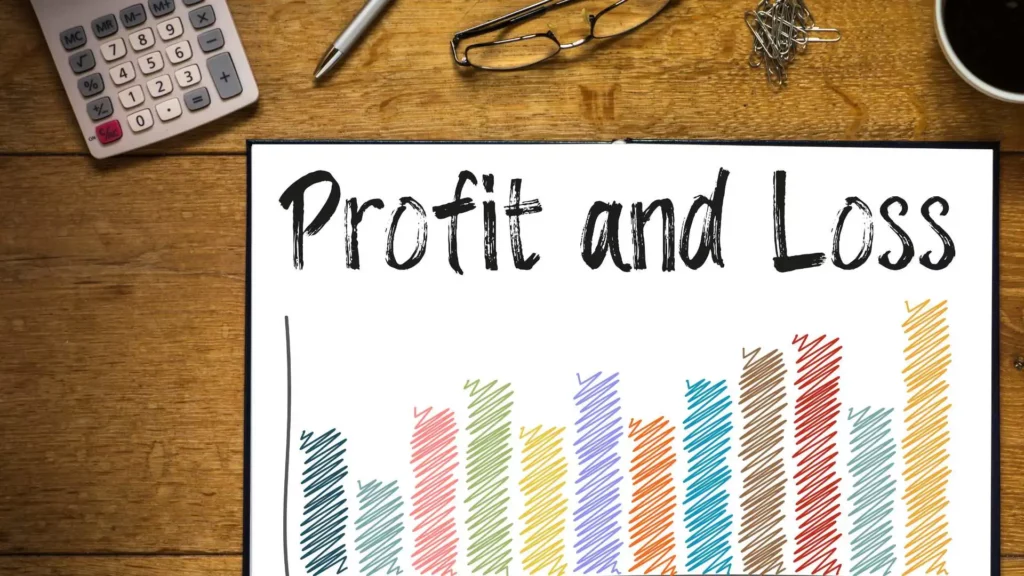Table of Contents
Reaching your 50s is a turning point in financial planning. With retirement on the horizon, many find themselves asking: Should I prioritize investing, or focus on paying down debt? Both choices can shape your long-term financial security, but the right balance depends on your income, debt levels, and future goals. While investing can grow your wealth, paying down debt offers peace of mind and reduced financial strain.
This is also where smarter money management tools can help. Platforms like Beem provide features such as Everdraft™, which lets you access $10–$1,000 of your verified deposits early without interest or credit checks, and Better than Instant Cash Advance, giving you same-day funds with job loss protection and plans starting at just 99¢/month. These options can help you stay financially flexible as you make critical decisions about debt and investments.
The Tradeoff That Shapes Your Next 15 Years
By the 50s, debt and investing were no longer abstract. Mortgages, car loans, lingering student or Parent PLUS loans, maybe a personal loan taken during a transition. On the asset side, there are workplace plans, IRAs or Roth IRAs, HSAs, and often a taxable account. At the same time, catch-up contributions open more room to save, and a handful of strong years can make up for under-saving earlier.
The core idea is simple. Treat each dollar like it has a hurdle to clear. If a guaranteed after-tax payoff return beats a conservative, realistic investing return, paying down that debt is smarter. If the debt is cheap and fixed and the portfolio can reasonably earn more over the horizon, then prioritize investing while still retiring the debt on schedule. Then build a system so these choices run without willpower.
Take Inventory and Calculate Your Hurdle Rates
Start by listing every debt with five items: balance, interest rate, term, whether the rate is fixed or variable, and whether any portion of the interest is tax-deductible under current rules. Consider whether itemizing applies given standard deduction realities and SALT caps for mortgages. For student and Parent PLUS loans, note any refinance or consolidation opportunities and whether federal protections are being used.
Now compute the after-tax interest cost for each loan. If interest is not deductible in practice, the after-tax cost equals the stated rate. If some mortgage interest is effectively deductible because you itemize beyond the standard deduction, reduce the cost by the marginal tax benefit that actually applies, not the theoretical one. For example, a 6 percent rate with a modest deduction benefit might be an effective 5.5 to 5.7 percent cost, not 6.
Next, choose a conservative expected portfolio return for comparison. This is not a dream number. It should reflect a realistic stock and bond mix for your risk capacity and the time left until and through retirement. The hurdle test is straightforward. If the loan’s after-tax rate exceeds what you would assign as a reasonable long-run portfolio return, that debt belongs higher on the payoff priority. If the rate is clearly below, investing rises in priority.
Round out the inventory with risk context. How stable is income? How close is retirement? How large is the current cash buffer? Variable-rate debt demands extra caution, because resets can suddenly push the effective cost above your hurdle.
Non-Negotiables to Fund First
Before the invest versus pay-down debate, three things come first.
High-interest debt triage is non-negotiable. Credit cards and personal loans with double-digit rates or anything near that get targeted aggressively. The guaranteed return from paying those down is too high to ignore. Even a short period of intense payoff here can transform cash flow quickly.
An emergency fund protects the plan. Aim for three to six months of essential expenses, held in high-yield savings or short-duration T-bills, depending on comfort and access. Entering your 50s with a thin buffer invites expensive borrowing when life happens, which then crowds out investing and catch-up opportunities.
Always capture the employer match and fund an HSA if eligible. The match is a risk-free return. When paired with a qualifying health plan, HSAs offer triple tax advantages and can become a stealth retirement healthcare account. Even during a payoff sprint, these two should be funded.
The Decision Framework: Invest or Pay Down Debt
When the non-negotiables are covered, use a simple decision framework that guides the split.
After-tax rate comparison sits at the center. If the loan’s effective after-tax rate is higher than the conservative return you expect from your portfolio, lean toward payoff. If it is lower, learn to invest. This handles most cases cleanly.
Taxes matter. Mortgage interest may offer less tax relief than many assume if itemizing is not happening. For those who do itemize in practice, quantify the marginal benefit instead of assuming a full deduction. Also, decide on the Roth versus Traditional mix for workplace and IRA contributions based on your current marginal rate versus what you expect in retirement. A higher bracket today often favors Traditional contributions, while a lower bracket today may favor Roth.
The psychological ROI is real. Some households sleep better with a paid-off home, which reduces monthly obligations and sequence risk in early retirement. Others value liquidity and the optionality that comes with a larger portfolio. Knowing which outcome feels safer can tilt an otherwise close decision.
A practical approach when numbers are close is to split. Use a percentage-based allocation that respects the math but also advances both priorities. Then revisit the split annually.
Debt-Specific Playbooks
Not all loans deserve the same treatment.
Mortgages at low fixed rates are often candidates for invest-first while paying on schedule. A 30 year fixed mortgage taken in a low-rate era may have an effective after-tax cost below a conservative portfolio return. Exceptions include households planning to retire very soon and wanting to reduce fixed housing costs, or those whose risk capacity is materially higher with no mortgage payment.
Mortgages at higher rates deserve a blended approach. Extra principal payments can provide a guaranteed return equivalent to the rate, while still maxing catch-up contributions. Some choose a target payoff date, such as before retirement or before Social Security begins, and set a fixed monthly prepayment to reach it.
Auto and personal loans with mid- to high rates should be accelerated. Cars depreciate, and the interest is often not deductible, so paying these off earlier frees cash flow and reduces risk. Replacing vehicles with reliable, lower-cost options can open room for investing if payments are a drag on the savings rate.
Parent PLUS and private student loans often carry rates that justify acceleration or refinancing. Evaluate private refinance options if federal protections are not needed. If the rate remains stubbornly high, set a payoff target date and automate extra principal, while still capturing match and catch-ups.
Credit cards or store cards at high rates require an immediate focus as noted above. Consider a structured payoff method with the highest rate first while maintaining minimums on all others, and lock in behavior changes so balances do not rebuild.
Investing Priorities in Your 50s
When investing earns priority space, aim for capital where it works hardest.
There are no maximum age-50 catch-ups in workplace plans. However, 401 (k), 403b, and most 457 plans allow additional contributions starting at 50. These raise the ceiling, reduce current taxable income if Traditional, and accelerate compounding if Roth.
Fund IRA or backdoor Roth contributions. If income is too high for direct Roth contributions, the backdoor method can still build Roth balances when coordinated with any pre-tax IRA balances. This adds tax diversification that will be valuable in retirement.
Build a taxable brokerage for flexibility. A healthy taxable account supports pre-59 and a half goals and creates an early-retirement bridge. It also allows tax-loss and tax-gain harvesting to manage brackets.
Align allocation with sequence risk defense. As retirement nears, maintain a one—to two-year cash sleeve for planned withdrawals, an intermediate bond allocation for the next few years, and growth for the long horizon. This structure keeps investing behavior steady while debt payoff and contributions continue.
Tax and Healthcare Considerations
Your 50s are also when tax windows open and healthcare choices start shaping the next chapter.
Roth conversions may make sense between a partial retirement and Required Minimum Distributions in lower-income years. Conversions reduce future taxable balances and build tax-free flexibility, but they should be sized with an eye on marginal brackets and the two-year lookback that will affect Medicare premiums later. If planning to retire before 65, be aware of ACA premium subsidies tied to income. Large conversions or capital gains could reduce subsidies during those bridge years. Model the tradeoffs before acting.
Medicare IRMAA brackets deserve awareness when doing late 50s and early 60s planning, since high-income years two years prior will drive premiums. Sometimes paying a temporary surcharge is still worth it for a large, strategic conversion, but it should be intentional.
Cash Flow Design That Makes Both Happen
The simplest way to escape the all-or-nothing trap is a rules-based split that runs on autopilot.
A 70 to 30 or 60 to 40 split works. Choose a percentage for extra cash each month that goes to debt payoff and a percentage that goes to investing. The exact numbers depend on your hurdle math and stress level. If debt is expensive, tilt toward payoff. If it is relatively cheap, tilt toward investing.
Automate both flows on payday. Set an extra principal transfer to the target loan each pay period, and set increased contribution percentages or automatic transfers to workplace plans, IRAs, and taxable. Treat windfalls like bonuses, RSU vests, or tax refunds with a preset split that leans toward the tighter side of your current priority. This avoids ad hoc decisions and lifestyle creep.
Revisit the split annually. Interest rates change, balances fall, incomes rise or pause, and markets move. A short review resets the dials without rebuilding the plan.
Risk Management and Peace-of-Mind Levers
Insurance and fixed-cost decisions influence how comfortable the plan feels.
Review disability coverage if still working. Income is the engine, and a gap here can derail both investing and payoff. Right-size term life if needed to protect a surviving spouse or to cover debt that would stress a survivor’s plan. Keep umbrella liability coverage to guard the balance sheet.
Refinance or downsize for structural savings. If a mortgage carries a high rate and refinance is possible at a meaningful reduction relative to costs, do the math. If housing is larger or more expensive than needed, downsizing can free equity and reduce monthly outflows, lifting the savings rate without sacrificing lifestyle.
Install guardrails for variable rate debt. If a HELOC or adjustable loan resets to a higher rate, have a trigger that temporarily pauses extra investing to accelerate payoff until the risk is contained.
A 12 Month Action Plan
Quarter one is for clarity and structure. Complete the inventory, calculate after-tax hurdle rates, and choose the payoff versus investing split. Automate enough to capture the employer match and HSA contributions in parallel with any high-interest payoff sprint. If any double-digit APRs exist, attack them now.
Quarter two is for acceleration. Push workplace contributions toward catch-up levels and configure IRA or backdoor Roth contributions. Choose the payoff target account and set automated principal prepayments. Establish a rebalancing cadence so investing stays on policy while cash flows change.
Quarter three is for leverage and risk. Evaluate any refinance or downsize opportunities. Model Roth conversions for the near future and confirm ACA subsidy guardrails if considering early retirement. If within five years of retirement, begin building a 12 to 24 month cash sleeve inside the portfolio for sequence risk protection.
Quarter four is for optimization. Harvest gains or losses deliberately in taxable accounts. Review bracket edges and any potential Medicare premium implications of year-end moves. Reset next year’s payoff versus invest split based on balances, rates, and income, and pre-schedule contribution increases or extra principal.
This rhythm keeps progress steady without turning money into a second job.
Where Beem Fits in a System for Efficient Money Flow
A good plan becomes easier when the mechanics are handled by a simple operating system. Beem can help by translating decisions into automated cash movements, guardrails, and shared visibility.
Buckets and automation turn intentions into routine. Create dedicated buckets for debt payoff, catch-up investing, HSA funding, taxable investing, and a cash buffer. Assign a fixed percentage of each paycheck to each bucket. For the payoff target, Beem can route funds directly as extra principal on a set cadence, while the investing buckets push contributions to workplace plans, IRAs, and taxable accounts on schedule. This keeps the split running automatically.
Scenario views bring clarity to tradeoffs. Compare lifetime outcomes for a faster payoff versus higher investing under different return and rate assumptions. Layer in Roth conversion windows, ACA subsidy thresholds, and Medicare lookback years. Seeing these side by side reduces second-guessing and helps lock the right split.
Guardrails and alerts protect the plan. Beem can watch APR changes on variable rate debts, nudge when contribution percentages are below catch-up targets, and flag when projected income approaches tax bracket edges or Medicare premium tiers. It can also track a savings rate in real time to prevent lifestyle creep from eroding progress.
Household coordination removes friction. Shared dashboards show roles, timelines, payoff progress, contribution status, and a simple countdown to target dates. This replaces a monthly debate with a common view of the plan, making course corrections quicker and less emotional.
Beem does not replace advice. It makes the chosen rules easy to execute and sustain.
Conclusion: Make Tradeoffs Once, Then Let the System Run
Whether you choose investing, paying down debt, or a mix of both, the key is aligning your strategy with your retirement goals, risk tolerance, and lifestyle needs. Reducing debt ensures stability and fewer financial obligations in retirement, while investing keeps your money working for you and builds long-term wealth.
No matter your approach, tools like Beem can smooth the journey. From same-day cash access with no credit checks or interest, to AI-powered features that help you earn, save, send, spend, monitor, and grow money, Beem provides the support you need to make confident, informed financial choices. With the right balance and the right tools, your 50s can be the decade where you set yourself up for a stress-free retirement. Download the app for more details.















































